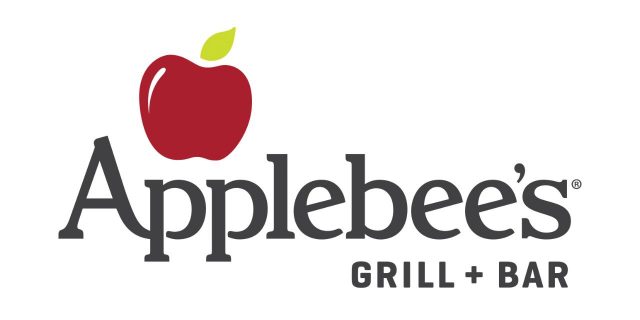Did you know that less than 20% of restaurant executives use their complete revenue management toolkit? The restaurant industry misses a huge chance to boost revenue through proper management tools. Brands that adopt advanced analytics and integrated management approaches can boost their sales by 6 to 10% in just two to three years.
Your restaurant might be leaving money on the table. The industry has bounced back to pre-COVID-19 levels, but more than 70% of restaurant executives limit their revenue management strategies because of resource constraints. Simple revenue management concepts can still boost your sales by 3 to 5%. Understanding what profitable restaurants do differently helps maximize your profits.
Understanding Your Restaurant’s Revenue Cycle
Restaurant revenue patterns give you the knowledge to make smart decisions about pricing, staffing and inventory management. Restaurants that keep track of their revenue cycles see a 3-5% increase in overall profitability based on industry data.
Daily revenue patterns
Your restaurant’s daily revenue changes based on specific times and customer behaviors. Peak hours bring in 80% of your daily revenue through faster table turnover and bigger checks. Your daily sales tracking shows which meal periods make the most profit, helping you adjust your staff and inventory levels. Each seat’s revenue tells you a lot about your restaurant’s performance. To name just one example:
An evening service making $8,000 with 80 seats over 5 hours = each seat produces $20 per hour.
Seasonal impact on sales
Seasonal changes affect restaurant performance by a lot throughout the year. Restaurants see more foot traffic and people want outdoor seating during warmer months. Weather conditions shape customer behavior directly – cold or rainy seasons usually mean fewer walk-in customers.
Your location’s impact on seasonal performance cannot be ignored. Winter sports destinations see restaurants thriving in cold months, while beachside spots peak during summer. This pattern recognition lets you prepare for busy and slow seasons by planning your menu and staff levels.
Special event revenue spikes
Special events create big money-making opportunities for restaurants. Research shows 93% of diners book tables more often for special events, and 61% don’t mind paying extra for special event menus. On top of that, 72% of restaurants say special events boost their bottom line.
Smart event planning fills empty seats during slow periods. Corporate events, holiday parties and unique experiences bring in new and repeat customers who are happy to pay premium prices. Well-run events lead to bigger checks and better revenue for each available seat per hour.
Tech Tools That Drive Restaurant Profits
“Restaurant revenue management involves using tools-like your POS-to analyze sales data so you can accurately predict future demand.”
— Nick Darlington, Restaurant industry expert and writer for 7shifts
Restaurant technology has evolved beyond simple payment processing. Modern restaurants use integrated systems that connect every part of their operations. These systems create a digital ecosystem to improve profitability.
POS system integration
Point-of-sale systems act as the central nervous system of restaurant operations. Modern POS systems connect with delivery platforms, reservation systems and accounting software. This integration cuts down manual data entry errors and makes operations smooth across all restaurant touchpoints.
Automated order management and better operational efficiency are the main benefits of POS integration. Research shows 60% of operators plan to invest in equipment or technology to boost productivity in both front and back-of-house operations. These systems let Chefs and kitchen staff track sales and monitor customer choices immediately to make smart menu decisions.
Inventory management software
Smart inventory tools track stock levels and cut food waste automatically. The systems update inventory immediately as orders come in, both in-house and online. They calculate recipe costs, watch margin performance and alert staff when items run low.
Restaurants using automated inventory tracking see major drops in food waste and better cash flow. The system spots waste, loss and theft through quick checks. Its best feature helps review order amounts based on sales forecasts and past usage patterns.
Customer relationship management tools
CRM systems linked to your POS give analytical insights into customer behavior and priorities. Restaurant CRM platforms create tailored experiences through detailed guest profiles, automated marketing campaigns and custom loyalty programs. Staff can track dining choices, order history and customer feedback to improve service.
Restaurant owners now earn over 21% of their revenue from non-core offerings, thanks to smart CRM use. The system helps analyze customer patterns, measure how well campaigns work and find ways to make guests happier.
Strategic Pricing Methods
Restaurants that succeed know how to adapt their pricing based on customer behavior and what customers just need. They use dynamic pricing to adjust menu prices. This depends on the time of day and customer demand.
Time-based pricing models
Smart pricing at different times helps restaurants boost their revenue. Restaurants using this model have seen sales increases of up to 12%. Prices usually go up by 8% during rush hours and drop by 20% when it’s slower to keep customer traffic steady.

Applebee’s story shows how well this works. They doubled their daily happy hours with half-price appetizers and saw sales jump by 7.7%. Their limited-time deals made up 19% of all sales, which proves these pricing tactics work.
Special event pricing
Getting event pricing right needs a balance between making money and giving value. This is especially when you have group bookings – you need to factor in direct costs, space use, and what competitors charge. Many restaurants now offer different pricing packages. These let customers pick what fits their budget while keeping profits healthy.
Event pricing works best when restaurants are upfront about what’s included. Successful venues spell out all costs clearly. This covers everything from service charges to extra fees for decorations or AV equipment. Being transparent helps build trust and keeps the business profitable.
Loyalty program pricing
Loyalty programs are a big revenue driver. Members spend about 5% more each time they visit compared to non-members. The top 10% of loyal customers generate 44% of loyalty visits and about half of all loyalty spending.
These programs have become more economical over time. The gap in discounts between loyalty and regular transactions dropped from 16% to 9% in two years. All the same, these programs give restaurants valuable customer data. This helps them create customized marketing plans and tweak their menus based on what customers prefer.
Customer Experience Optimization
“In the hospitality industry, customer service is ultimately your stock-in-trade. This is especially true for restaurant businesses. Dining out is a leisure activity for most people; they pay for the dining experience as much as the food.”
Speed and efficiency define how customers experience modern restaurants. Research shows that over 20% of customers get frustrated after waiting just two minutes to order. Quick service plays a vital role in growing revenue.
Wait time management
Managing wait times well can make a big difference in your restaurant’s success. When customers wait too long, they may leave or avoid returning. But when service is fast and smooth, they’re more likely to come back—and even spend more. That’s why top restaurants use smart strategies to keep wait times low and profits high.
Cutting drive-thru wait times by 5 seconds can add over $8,000 in yearly revenue per location.
Also, pre-ordering options cut down queues through mobile apps and online platforms. Restaurants with table booking systems see shorter wait times and keep more customers coming back. 87% of customers want contactless payment options. Digital solutions streamline the payment process.
Table service speed
Quick table service needs trained staff and smooth operations. Research proves that better bussing techniques help clear and reset tables 22% faster. The right staff scheduling matters because peak hours need enough coverage to keep service quality high.
Servers who anticipate guest needs before they ask improve service quality. Successful restaurants make sure hosts greet guests within 30 seconds. This sets the tone for a great dining experience. Staff members trained in multiple roles keep operations running smoothly during rush hours.
Guest satisfaction metrics
Guest satisfaction tracking points out what needs improvement. Studies show friendly and authentic service (34%), up-to-the-minute information (22%) and listening to customer needs (20%) create lasting dining memories. These metrics help make evidence-based decisions about service improvements.
Regular performance checks need clear, measurable goals. Speed of table service, daily table occupancy and the ratio of positive to negative reviews serve as key metrics. Restaurants can maintain high service standards through consistent monitoring without having too many or too few staff members.
Cost Control Techniques
Cost control is the life-blood of running a successful restaurant. Restaurants that track their prime costs every week add 2-5% to their bottom line. This makes it vital to have strong cost management strategies in place.
Food cost management
Prime cost control needs constant focus on food, beverage and labor expenses. Prime costs should stay under 65% of total sales for table-service restaurants. The most profitable restaurants keep these costs between 55-60%.
Smart buying strategies make a big difference in managing food costs. Successful restaurants talk to suppliers about better prices and buy in bulk when it makes sense. They use portion control to minimize waste and keep serving sizes consistent. A First In, First Out (FIFO) system helps cut down food spoilage and keeps inventory levels accurate.
Labor cost optimization
Labor costs usually take up 30-35% of total revenue, but many restaurants now see this closer to 40%. Quick-service restaurants plan to spend about 25% of revenue on labor. Casual dining spots target 25-35%.
Staff training does more than improve performance. The core team needs to understand ways to save money, like reducing food waste and using equipment properly. Cross-training staff helps with flexible scheduling and cuts the need for extra help during busy times.
Operational expense tracking
You need to watch three main types of operational expenses carefully: labor, food costs and business costs. Successful restaurants look at supplier bills often to find savings and use portion control to cut waste.
Energy efficiency can save you lots of money. LED lights and energy-efficient appliances can lower your utility bills. These investments cost more upfront than standard equipment but pay off through lower operating costs.
Restaurant owners who keep track of their cash flow with solid systems avoid surprise losses. Regular expense tracking and analysis help restaurants spot areas to improve and keep healthy profit margins. This means watching key numbers like food cost percentage, labor cost percentage and average revenue per customer.
Conclusion
Smart revenue management might seem complex at first glance. The implementation becomes easier when you break it down into manageable components. Focus on one area until you become skilled at it before expanding further. Restaurants that fully embrace these strategies typically see 6-10% revenue growth in their first few years. Your restaurant’s next growth phase begins with smart revenue management.
Restaurant Revenue Management FAQ
Successful restaurant revenue management in 2025 involves understanding revenue cycles, utilizing tech tools like integrated POS systems, implementing strategic pricing methods, optimizing customer experience, and employing effective cost control techniques.
Restaurants can boost profits by integrating POS systems with other platforms, using inventory management software to reduce waste, and implementing CRM tools to personalize customer experiences and drive loyalty.
Top-earning restaurants are using time-based pricing models, special event pricing, and loyalty program pricing to maximize revenue. These strategies allow for dynamic price adjustments based on demand and customer behavior.
Customer experience is crucial in restaurant revenue management. Efficient wait time management, speedy table service, and tracking guest satisfaction metrics are key factors that directly impact a restaurant’s bottom line.
Effective cost control techniques include managing food costs through smart purchasing and portion control, optimizing labor costs through efficient scheduling and cross-training and tracking operational expenses to identify areas for improvement and maintain healthy profit margins.

Written by Lidija Misic
Lidija holds a BA in English Language and has lived in five different countries, where she has worked in various roles, including as a flight attendant, teacher, writer and recruiter. Her biggest passion is crafting great content and reading. She is particularly passionate about creating punchy copy that inspires people to make positive changes in their lives.

Reviewed by Marcy Miniano
Marcy is an editor and writer with a background in public relations and brand marketing. Throughout her nearly decade-long career, she has honed her skills in crafting content and helping build brands across various industries — including restaurant and hospitality, travel, tech, fashion and entertainment.




